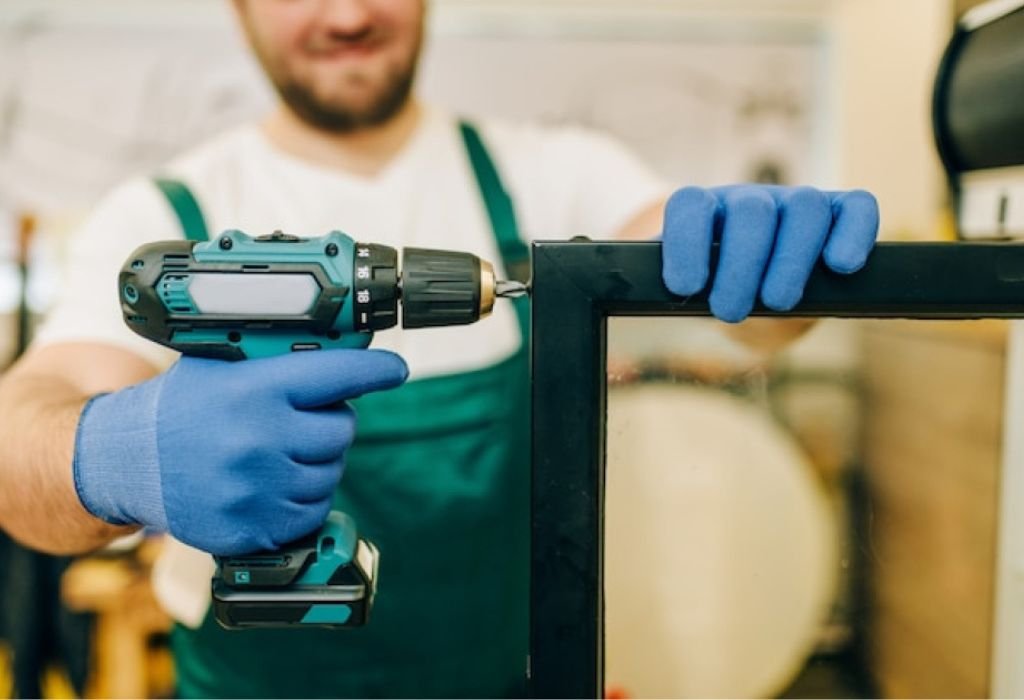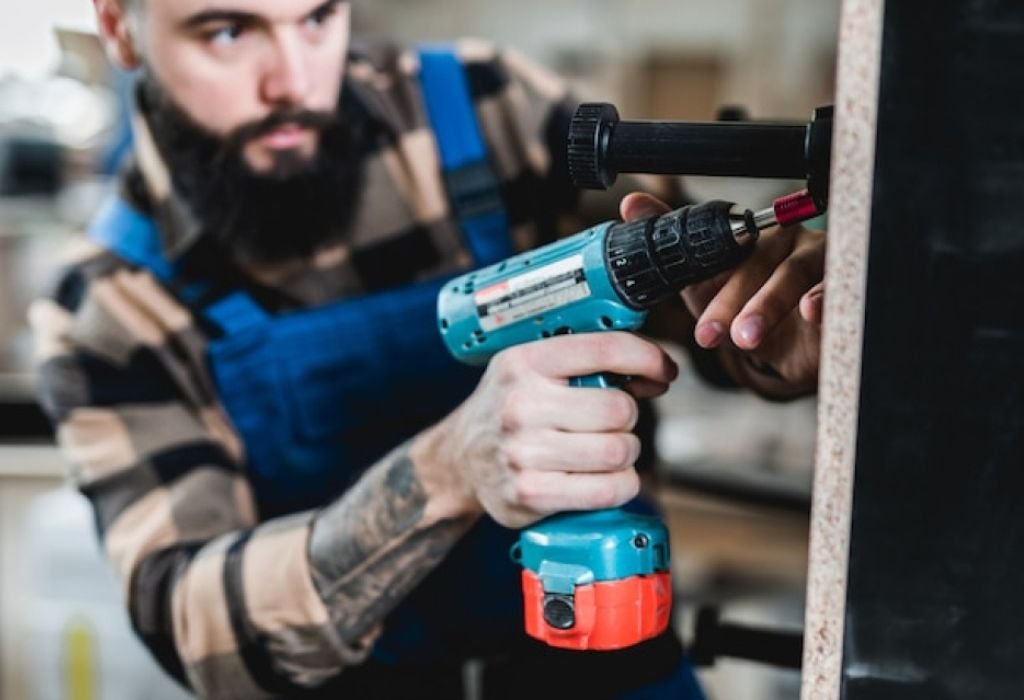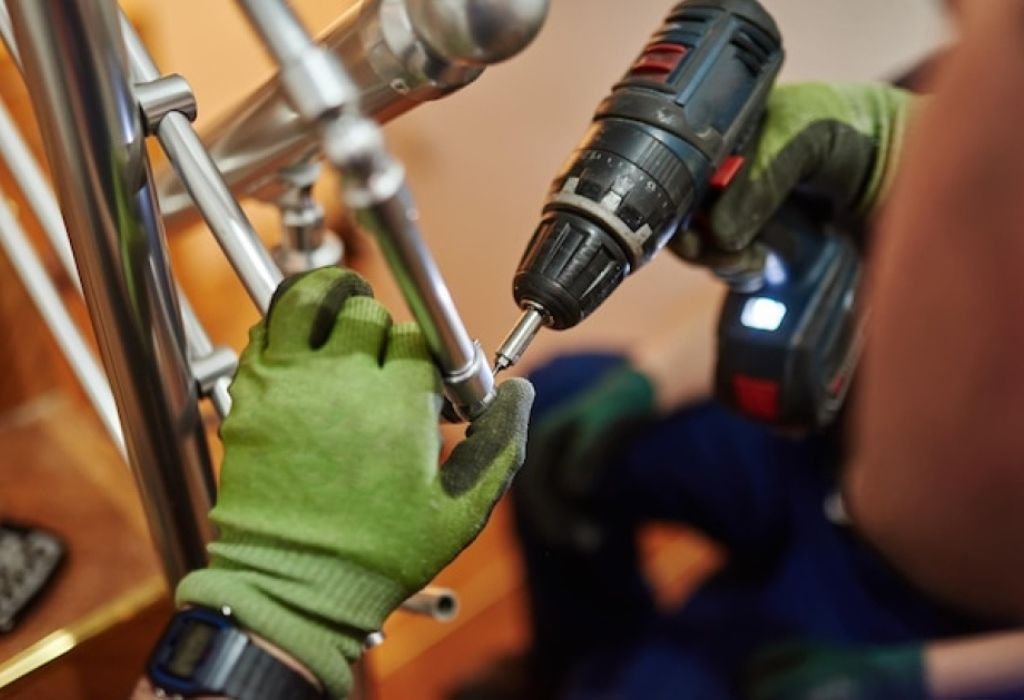A mechanic leans over a brake rotor, frustrated as the screwdriver slips and the screw head begins to strip. Hours of work could be lost to one stubborn fastener.
At this moment, a simple tool—the manual impact driver—can save both time and material.
A manual impact driver looks unassuming, yet it delivers a powerful combination of twisting force and downward shock.
Striking its end with a hammer instantly converts impact into torque, breaking free rusted or over-tightened screws that ordinary tools cannot move. Unlike a powered impact driver, it requires no electricity or batteries, only precision and a firm strike.
The need for such a tool is clear. Studies show that stripped or seized fasteners are among the most common causes of repair delays in automotive and machinery maintenance, costing workshops both time and money (source).
By reducing cam-out and distributing force directly into the fastener head, the manual impact driver lowers the risk of damage while boosting efficiency.
What makes this tool valuable is its versatility.
Whether freeing brake rotor screws on a car, loosening corroded bolts on outdoor hardware, or saving vintage woodworking projects, it offers a precise solution when other tools fail.
It also doubles as a tightening device, ensuring controlled torque in sensitive applications.
This guide will explain what a manual impact driver is, how it works, and why every mechanic, DIYer, and tradesperson should keep one in their toolbox. From anatomy and step-by-step usage to comparisons with drills and powered impact drivers, you will discover exactly how this tool transforms difficult jobs into manageable tasks.
Quick Answer — What Is a Manual Impact Driver?

A manual impact driver is a compact hand tool designed to loosen stuck or rusted fasteners. When struck with a hammer, it delivers a sudden twisting force combined with downward pressure, making it ideal for freeing screws and bolts that standard screwdrivers or drills cannot move.
The tool typically has a reversible collar, allowing it to both loosen and tighten fasteners. Its hammer-driven mechanism reduces cam-out and prevents damage to screw heads by seating the bit deeper during impact.
Is a manual impact driver different from a powered impact driver?
Yes. A manual driver requires hammer strikes to work, while powered versions generate impacts mechanically with motors.
When should you use a manual impact driver?
It’s best for rusted brake rotor screws, machine screws, or corroded hardware where normal screwdrivers fail.
Can it also tighten fasteners?
Yes. By switching the collar to the tighten setting, it applies controlled torque without over-stripping threads.
Why does it prevent cam-out?
The downward force during impact keeps the bit firmly seated in the fastener head.
Do you need special bits?
Yes. Always use impact-rated bits or sockets to handle the shock and avoid breakage.
Anatomy & How It Works
A manual impact driver is made of hardened steel, designed to survive repeated hammer strikes. Inside, a spring-loaded mechanism converts vertical impact into rotation.
Internal Mechanism
When you hit the tool’s end cap with a hammer, the force transfers into a splined shaft, which twists slightly as it moves downward. This combined rotational torque and downward seating force is what frees seized fasteners.
Why is it so effective?
Because the shock breaks static friction instantly, unlike slow, continuous torque.
Can light taps work?
No. Solid strikes from a dead-blow or ball-peen hammer are needed.
Does it damage screws?
No, if used correctly. The downward shock reduces stripping compared to screwdrivers.
Is lubrication inside needed?
Occasionally, yes—light oiling keeps the internal spline moving smoothly.
What It’s Not (vs Drills & Wrenches)
Many confuse manual impact drivers with drills or impact wrenches, but they serve very different roles.
- Drills provide continuous rotation, best for boring holes.
- Impact wrenches are powered tools delivering high torque to sockets.
- Manual impact drivers are precision strike tools for stuck screws and small bolts.
Impact driver vs drill?
A drill spins continuously, while an impact driver delivers bursts of torque.
Manual vs battery impact driver?
Manual adds downward hammering force, making it better for seized screws.
Is it portable?
Yes, it needs only a hammer and fits in a glovebox or toolbox.
When to Use a Manual Impact Driver
Manual impact drivers shine in specific scenarios where other tools fail.
Automotive & Powersports
They are essential for brake rotor screws, carburetor screws, and aluminum engine covers. These fasteners often seize from heat cycles and corrosion.
Will cordless impacts strip JIS screws?
Yes, often. Manual impact with the correct bit prevents cam-out.
Is it safe on aluminum housings?
Yes, when aligned straight and struck firmly.
Should penetrating oil be used?
Yes, let oil soak before striking to loosen corrosion.
Shop, Woodworking & Hardware
For woodworking, old painted or varnished screws often resist removal. The impact driver seats the bit deeper and breaks the bond without damage.
Can it handle brass screws?
Yes, with caution and light strikes.
Does it help with machine screws?
Yes, it works well on frozen or corroded tool screws.
Construction & Outdoor Jobs
Outdoor gates, anchors, and marine hardware often seize due to rust. A manual impact driver provides the force to free them.
Can it replace a breaker bar?
No, breaker bars are for large bolts, not small screws.
Does cold weather affect it?
Yes, frozen fasteners often release better with impact.
How to Use a Manual Impact Driver (Step-by-Step)

Step 1: Prep & Setup
- Select the correct impact-rated bit (Phillips, JIS, Torx, hex).
- Apply penetrating oil if needed.
- Set the collar to Loosen or Tighten.
What hammer is best?
A 1.5–2 lb ball-peen or dead-blow hammer works best.
Do gloves and goggles matter?
Yes, always use PPE.
Step 2: Strike Technique
- Hold the driver straight in the screw head.
- Strike the end cap firmly with the hammer.
- Let the internal mechanism twist and seat the bit.
How many hits are needed?
1–3 solid strikes usually free a fastener.
What if it slips?
Re-seat with a tighter bit or use a JIS bit for Japanese screws.
Step 3: After Release
- Once the screw turns, switch to a screwdriver or ratchet.
- Clean the threads and apply anti-seize if reusing.
Should old screws be reused?
Not if damaged—replace them.
Can it torque down new screws?
Yes, in controlled settings, but final tightening should use a torque wrench.
Manual Impact Driver vs Alternatives
Manual vs Cordless Impact Driver
Cordless impacts are fast and convenient but don’t add the same downward shock. Manual drivers excel with frozen screws and precise jobs.
Which is safer for delicate work?
Manual, because you control the force.
Which is faster?
Cordless, for driving many screws.
Which prevents cam-out better?
Manual, thanks to hammer-driven downward pressure.
Manual vs Impact Wrench
Impact wrenches deliver hundreds of ft-lbs to sockets, not screw bits. Manual drivers are for Phillips, Torx, and JIS screws.
Can a wrench replace a manual driver?
No, it lacks downward seating force.
When is a wrench better?
For lug nuts and large bolts.
Bits, Sockets & Accessories
- Always use impact-rated bits for strength.
- Match standards (Phillips, JIS, Torx, hex).
- Use socket adapters for small bolts.
Why JIS bits for motorcycles?
Because Japanese screws strip easily with Phillips.
Do long bits work?
Short bits are stronger and safer.
Are extensions safe?
Yes, if alignment remains straight.
Safety & Best Practices

Protecting Work
- Keep tool straight to avoid ovaling screw heads.
- Use backing support on delicate surfaces.
Can it crack castings?
Not if aligned properly.
What if a screw is brittle?
Start with lighter taps, then increase force.
Personal Safety
- Wear safety glasses, gloves, and hearing protection.
- Expect some rebound from hammer strikes.
Can bits shatter?
Yes—always use hardened impact bits.
Troubleshooting
Why didn’t the screw move?
Insufficient hammer force or wrong bit.
What if it still won’t budge?
Re-soak with penetrating oil, apply heat, or use an extractor.
Why does the bit keep slipping?
Check alignment and use the correct standard.
Maintenance & Care
- Keep mechanism lightly oiled.
- Store dry to prevent rust.
- Replace worn bits, not the tool.
Does it need frequent lubrication?
Only after heavy use.
Will it wear out fast?
No, the steel body lasts years.
Buying Guide
When purchasing a manual impact driver, look for:
- Hardened steel body.
- Reversible loosen/tighten collar.
- 3/8″ or 1/2″ drive.
- Set of impact-rated bits.
- Protective storage case.
Which drive size is best?
3/8″ for screws, 1/2″ for larger bolts.
Budget or pro-grade?
Budget works for occasional use; pro models last longer in daily shops.
Conclusion
So, what is a manual impact driver? It’s a hammer-struck tool that converts impact into torque and downforce to free seized screws and bolts without stripping them.
This tool shines in automotive, construction, and DIY settings, offering reliability when drills and powered drivers fail. With the right bits, safety gear, and striking technique, it’s one of the most dependable tools in any kit.
Final advice: Keep a manual impact driver in your toolbox. When rust, corrosion, or seized screws stop progress, this compact tool ensures you finish the job without damage.

I’m John F. Nicholas, the founder, lead writer, and drill enthusiast behind 101drill.com. With years of hands-on experience in power tools and DIY projects, I created this platform to share practical knowledge, expert tips, and real-world insights to help others master the art of drilling.
